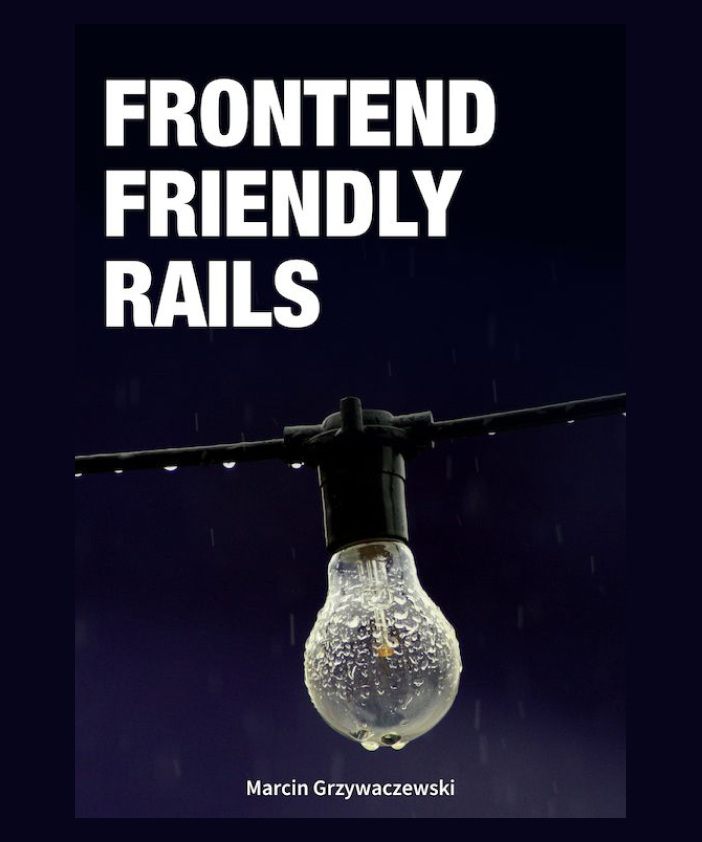Frontend Friendly Rails
You’ll learn how to upgrade defaults Rails provides and introduce cool features that’ll help you with making your apps more maintainable and faster to write.
What is “Frontend Friendly Rails” about?
To improve Rails experience with writing APIs, there is some knowledge you need to grasp to do it in an optimal way. Fortunately, you don’t need to do it before implementing it. Most techniques in the book are written as a step-by-step, complete solutions. They start with showing benefits a technique may bring to your workflow, so you can discuss it with your team before. You’ll also get all theory necessary to take full grasp of what you’re doing.
Who should read “Frontend Friendly Rails”?
For experienced programmers
What will you learn in “Frontend Friendly Rails”.
You’ll learn how to upgrade defaults Rails provides and introduce cool features that’ll help you with making your apps more maintainable and faster to write.
The book is a set of techniques you can apply to your both new or legacy code. You’ll learn:
- How to make your frontend more independent and boost your frontend-first development speed by introducing UUIDs instead of sequential IDs generated by Rails. A step-by-step, database-agnostic, legacy-ready solution is presented.
- How to avoid very often headaches while migrating assets to a different domain by knowing what is CORS, how it works and how to configure it correctly in Rails.
- How to stop inventing your own response formats and waste time by implementing the JSON API industry standard, making your API ready for even the wildest of features.
- How to create a real-time API by implementing the real-time messaging bus and making it indistinguishable from user actions. This is the most maintainable solution I’ve encountered in the wild so far.
- How to get your thinking about frontend on the higher level by knowing and understanding consequences of your frontend decisions.
- How to build a modern asset pipeline using Node.js tools instead of Sprockets. This way you can use today technologies in an easy way. This is a step-by-step guide with explanations of every tool you’ll use. After the process you’ll have an environment ready for production builds, testing and using the newest standard of JavaScript.

